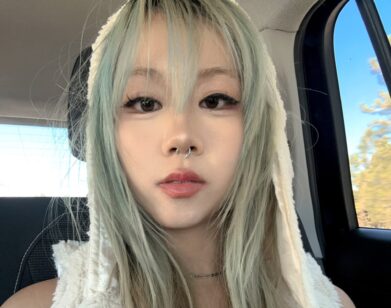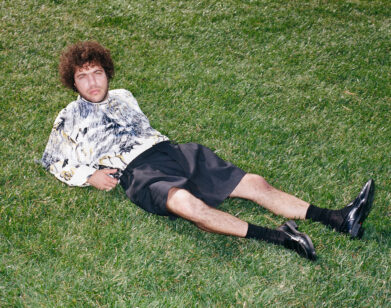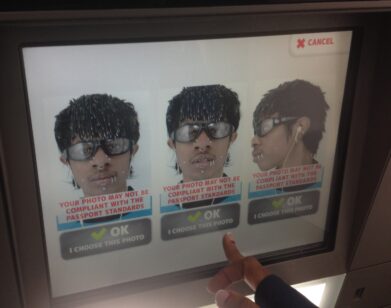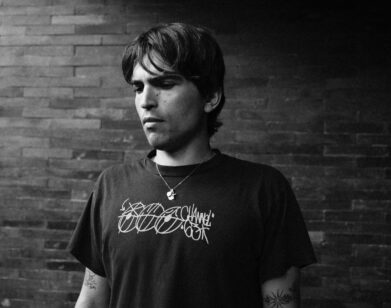Robert Glasper and the New Jazz Age
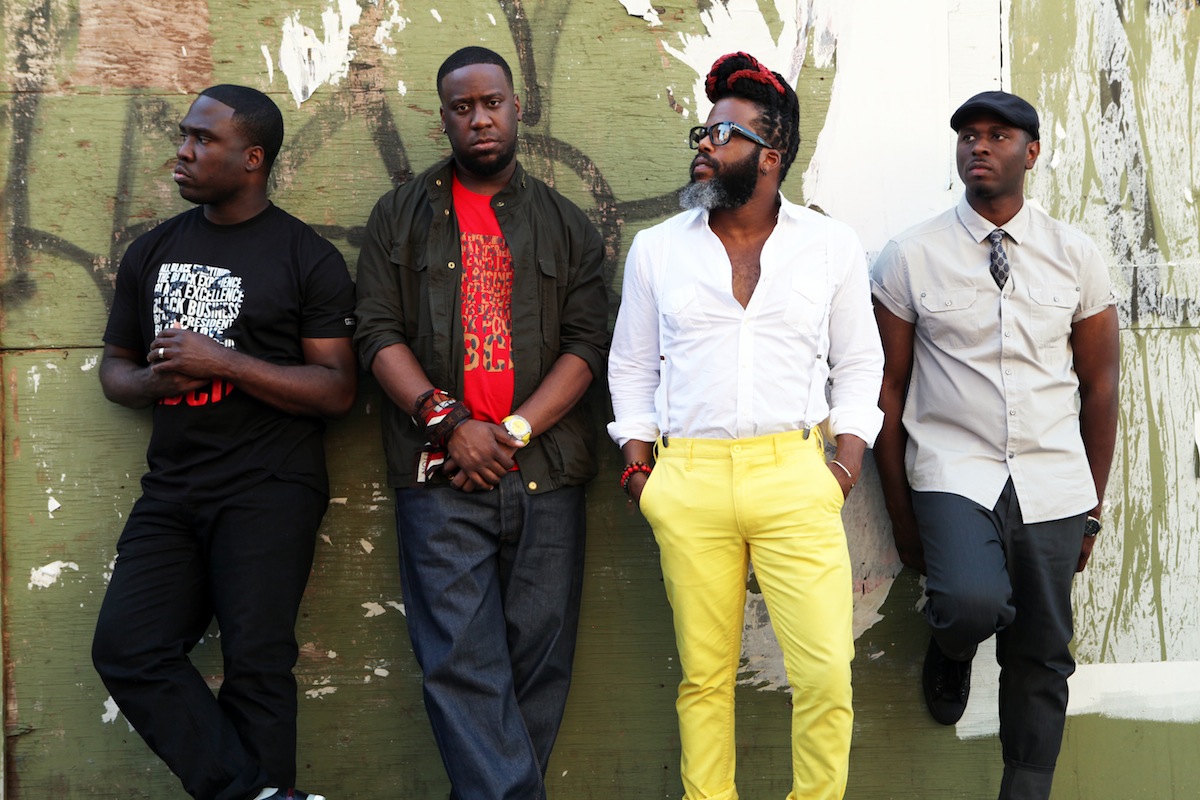
ABOVE: ROBET GLASPER (SECOND FROM LEFT) AND HIS BAND. IMAGE COURTESY OF JANETTE BECKMAN
Robert Glasper’s energy is infectious. His voice envelops our conversation with an overwhelming feeling of enthusiasm for every subject touched. Intelligent, creative, and incredibly impassioned, the pianist is the ideal flag-bearer for the new jazz era. It’s not an easy gig: in an age in which the genre is dismissed as stagnant and dry, high hopes are laid on those musicians turning to new ideas and technology in favour of a more rousing future.
Glasper has been riding the cusp of this new phase since his debut album in 2003. But it was only with the release of the heavy-hitting Black Radio that he really gave the jazz stalwarts “the finger.” A musical feast for soul aficionados and freshmen alike, the album overlaid the traditional jazz blueprint with a maelstrom of zinging collaborations and digital treatments and took home the Best R&B Album trophy at the 2012 Grammy Awards.
With Black Radio 2, he’s back for another slice. From Faith Evans to Brandy, a swath of Glasper’s childhood heroes peppers the line-up. Then there’s Jill Scott, Dwele, Marsha Ambrosious, Norah Jones and the holiest of canines, Snoop Dogg. This roll call may be a thrill for Glasper at kick-off, but at the end of the day it’s no biggie. Because from where he stands, jazz and hip-hop are kindred spirits in need of reunion, and it’s only through these kinds of combinations that the former will continue to evolve. Then, of course, there’s the music, which innovatively blends then and now in a synthesis that can only be aligned with the rebirth of jazz. On the eve of the record’s release, Glasper ignited a conversation that could be described as enlightening—but that would be an understatement.
TEMPE NAKISKA: I imagine you would have felt a lot of pressure in coming back with a second record. What was your aim in approaching it?
ROBERT GLASPER: To not make the same album twice. I know that people are going to compare it no matter what, so I wanted to make sure that it was different. Once we won that Grammy, I felt that we should make an album that was a little bit more produced, more refined. I even went ahead and worked with some songwriters, because I wanted to do more original material. On the first one, we had a lot of covers, because when people do covers they tend to catch on faster than original songs. Now that people know about us and are looking out for it, we feel comfortable doing original songs. So I think that just from that fact alone, it makes it a different album. It definitely has the same vibe, but there are differences. Like I have a new drummer, Mark Collenberg, and he uses drum pads and sounds different than Chris [Dave].
NAKISKA: Sounds like it was pretty strategic.
GLASPER: Exactly, exactly.
NAKISKA: Did you take the same approach with recording everything live in the studio?
GLASPER: Absolutely. Even stuff that sounds produced or sounds like a loop is not a loop. I even put that in my liner notes, because I wanted people to be clear that we’re live musicians, but when we want to we can sound exactly like a track. That’s a skill that I’m proud of: to be able to be a jazz musician and go a bit crazy sometimes and other times be able to pull it all in and lay it down like a track. It was the same kind of concept, just getting cats in the studio, but this time we knew what we were going to do for the most part. Black Radio was pretty much a jam session. But this album was a little bit more thought-out.
NAKISKA: How do you go about choosing whom you collaborate with?
GLASPER: There are so many great artists that I love, some of them are mainstream and some are not. With Part 1, I had too many people that I wanted on the album, and by default some just didn’t make it on there because of timing and other obligations. So those people are on Part 2. And there were people that didn’t fit onto Part 2… so I still have options. Sometimes I’ll write a song first and then I’m like, “Oh this person will be great on this song.” But there are some artists I know what want, like off the top I knew I wanted Brandy and Faith Evans. Their music is like the soundtrack to my life, so it was a personal thing for me. So once they said yes, I wrote songs specifically for them.
NAKISKA: How much of this collaborative process is driven by a desire to keep learning?
GLASPER: Entirely, without a doubt. You can see how different artists work, from writing to recording, just from being in the studio environment with them. For instance, Emeli Sandé came into the studio, and I already had a song written for her. But she didn’t like it! So she was like, “Do you mind if I rewrite the melody and the lyrics of the song?” I told her I’d just play her the track without the demo melody, but she said she couldn’t write over a pre-recorded track, it had to be acoustic piano. So I had to sit there and play the song for an hour while she walked around with a pen and a pad and re-wrote it. People have different things that make them tick, and that was really interesting.
NAKISKA: Has there been a moment over the past few years working with somebody that has just completely blown you away?
GLASPER: Honestly, recording with Faith Evans blew me away. Both of them: Brandy and Faith. Because I literally grew up with their music, more than anybody else I’ve been listening to them since I was in junior high. It was such an honor to be in the studio with them, and for them to like my music.
NAKISKA: Let’s talk about your approach to jazz. You said once that with Black Radio you wanted to give jazz a “big ass-slap” and shake things up. Do you feel that you have?
GLASPER: Totally. I feel like I have and they don’t know what to do with it. Black Radio was a mixture, it had some jazz and it had R&B and hip-hop, it was a mix of a lot of different things. I think it woke people up to thinking that this kind of thing is okay to do. Because it’s been such a long time since something’s come around that’s been interesting. Luckily, Esperanza [Spalding] came around; she’s interesting. But for the most part, 99 percent of jazz is boring; you’ve heard it before. People aren’t doing anything creative that’s extremely modern. They tend to always be like “Let’s do a tribute to Miles Davis!” All the new albums are tributes to history. It becomes too much at a certain point, it leaves us waving like “Hello? I’m alive, I’m here!” You know? So I really do feel like it needs some spice, it needs to be relevant to today’s times, today’s people, today’s sound.
NAKISKA: Why do you think there is this reluctance to embrace new material?
GLASPER: Jazz stopped being creative in the early ’80s. After your acoustic era, where you had the likes of the Miles Quintet, when it gets to the ’70s it started being jazz fusion where you had more electronic stuff happening, then in the ’80s they started trying to bring back the acoustic stuff, like Branford Marsalis and the Wynton [Marsalis] & Eric [Clapton] sextet. It started dying down from there. Miles was still around in the ’80s and he was still being creative; he was playing Michael Jackson songs and changing sounds, but a lot of people were still trying to regurgitate the old stuff. I think the people who are saying jazz has to sound a particular way, or “what you’re doing isn’t jazz,” are just scared because they can’t do it. A lot of them just aren’t talented enough to do anything new, honestly. It’s the people who are talented enough and who have the open mind and who are forward-thinkers are the ones who are doing something new. You tend to hate on what you can’t produce.
NAKISKA: It’s a fear that transcends a lot of creative outlets.
GLASPER: I mean, that’s the point of history! If everybody thought like jazz purists, jazz music would have stopped back with Charlie Parker. But people have to say, “Well, that’s great, but fuck that, I’m gonna do this,” and then it keeps going. There’s always a “Fuck that!” moment in every genre of music that keeps the creativity snowballing. It happened in R&B when D’Angelo said, “Fuck that!,” and that’s why you have D’Angelo. You have these great artists only because they broke from the mold, from the regular.
NAKISKA: When was your “Fuck that!” moment?
GLASPER: My “Fuck that!” moment was my trio album, In My Element. Well no, my complete “Fuck that!” moment I would say was Black Radio. I was like, “Fuck y’all, I’m gonna do this record.” Because my other records are still jazz, there’s some hip-hop stuff on In My Element, but for the most part it’s a jazz record. I think I gave the complete middle finger when I did Black Radio. [laughs]
NAKISKA: It’s a middle finger to be pretty proud of, hey.
GLASPER: Right.
NAKISKA: Like you said, Black Radio fuses so many genres—you’ve got hip-hop and soul and funk and R&B. Do you think these kinds of fusions are the way forward for jazz?
GLASPER: Yeah, I think so. A lot of people in the jazz community are looking at how much notoriety we’re getting. And we’re an inspiration to a lot of young people, because now there’s something new they can aim for that’s in their grasp. Because a lot of times when you attend a jazz college it’s all about the history, none of the teachers there are forward-thinking, for the most part, so they don’t teach you how to be yourself and embrace the music around you. Because they don’t even listen to the music that’s around them. So I think we’re an inspiration to those young people, to know they can be honest and not run away from your influences that are not jazz. We’re definitely breeding a new wave of jazz, for real.
NAKISKA: When people list your references, they do tend to stick to the old standards. Who is a reference that’s not quite as well known?
GLASPER: Mulgrew Miller. He was a jazz pianist who passed away a few months ago. He was my biggest living inspiration in terms of a piano player. I learned a lot from him.
NAKISKA: I also wanted to ask about what else you’ve been up so. I imagine Black Radio would have sparked a lot of production gigs, what have you been working on since?
GLASPER: I started producing Chaka Khan’s new record; we started in February and will hopefully finish it later this year. I just produced a project on Jill Scott, and I produced some things for Kim Burrell, a gospel vocalist. Oh, and I also did some production with Seun Kuti, Fela Kuti’s son. We’re in the process of mixing that.
NAKISKA: Is it nice to have that separate outlet from Black Radio, your own projects?
GLASPER: Oh yeah, totally.
NAKISKA: How do you manage to balance your time?
GLASPER: It’s hard, but I make these albums pretty damn fast! [laughs] Like Black Radio 1 was pretty much made in a week. Black Radio 2 was pretty much the same thing; we had about five days in the studio. And I had one or two days with other people in the studio. We normally do that in the middle of the tour—when we recorded Black Radio 2, we were in the middle of touring the first album. I like coming off the road and going into the studio because the band is fresh. We’ve been playing together and we develop our little musical snacks together. Sometimes it helps if you’ve been playing a song on the road and then go straight in to record it.
NAKISKA: Have you already got ideas for another Black Radio album?
GLASPER: Well, I’ve got ideas for another kind of Black Radio album. More like a spiritual one, a gospel one and maybe with some R&B artists as well. I think Black Radio has become a brand, so I don’t want to let it go quite yet.
NAKISKA: What keeps you coming back for more, coming back to the studio every day?
GLASPER: The people. It’s funny, now that we have Twitter and Facebook and stuff, you can really see how you affect fans. Before all that, fans couldn’t tell you exactly how they feel, unless they came up after a show, and even then you can’t stand there and talk to everybody in the audience. So it’s nice to see people tweet me and say, “Your music has changed my life,” or “I had my baby to your music,” or “I got married to your music.” I’ve heard so many things, and it’s amazing to hear people’s stories and how you affect their life. I feel now it’s an obligation, I have a duty to do what I love to do. That’s my inspiration, without a doubt.
BLACK RADIO 2 IS OUT TOMORROW, OCTOBER 29. FOR MORE ON THE ROBERT GLASPER EXPERIMENT, PLEASE VISIT THE ARTIST’S WEBSITE.

